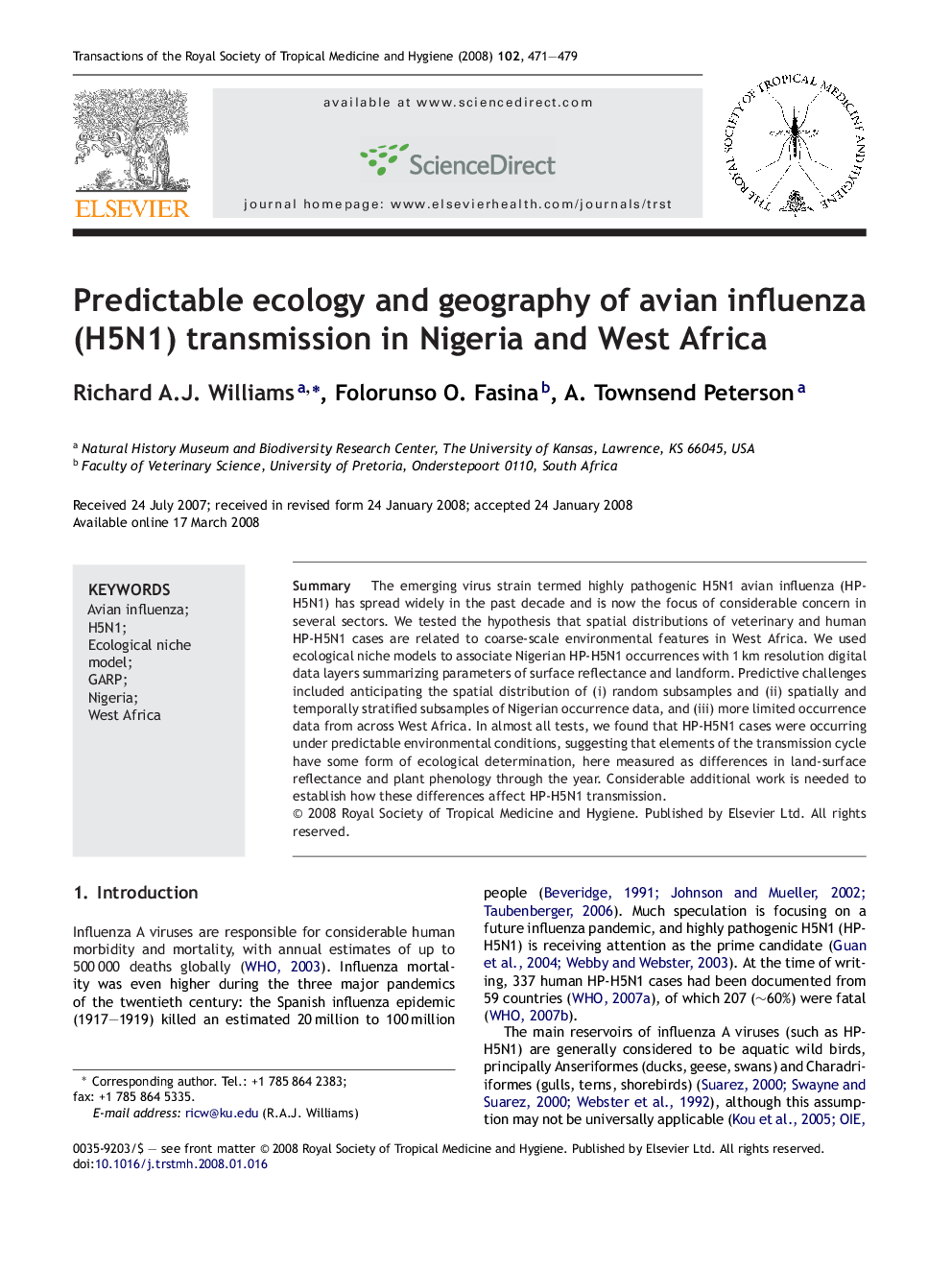| Article ID | Journal | Published Year | Pages | File Type |
|---|---|---|---|---|
| 3420814 | Transactions of the Royal Society of Tropical Medicine and Hygiene | 2008 | 9 Pages |
Abstract
The emerging virus strain termed highly pathogenic H5N1 avian influenza (HP-H5N1) has spread widely in the past decade and is now the focus of considerable concern in several sectors. We tested the hypothesis that spatial distributions of veterinary and human HP-H5N1 cases are related to coarse-scale environmental features in West Africa. We used ecological niche models to associate Nigerian HP-H5N1 occurrences with 1Â km resolution digital data layers summarizing parameters of surface reflectance and landform. Predictive challenges included anticipating the spatial distribution of (i) random subsamples and (ii) spatially and temporally stratified subsamples of Nigerian occurrence data, and (iii) more limited occurrence data from across West Africa. In almost all tests, we found that HP-H5N1 cases were occurring under predictable environmental conditions, suggesting that elements of the transmission cycle have some form of ecological determination, here measured as differences in land-surface reflectance and plant phenology through the year. Considerable additional work is needed to establish how these differences affect HP-H5N1 transmission.
Related Topics
Life Sciences
Immunology and Microbiology
Applied Microbiology and Biotechnology
Authors
Richard A.J. Williams, Folorunso O. Fasina, A. Townsend Peterson,
